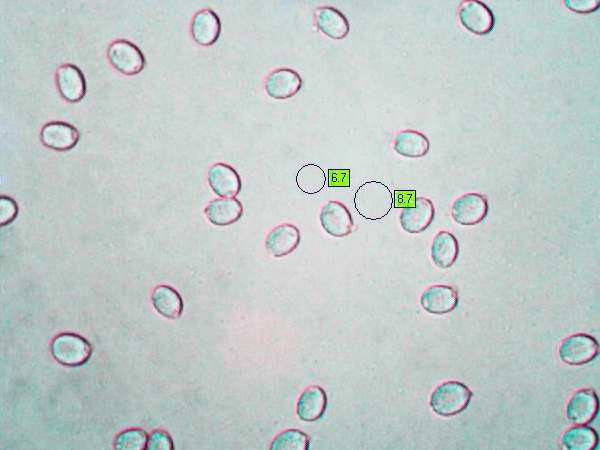Amanita porphyria Alb. & Schwein. - Grey Veiled Amanita
Phylum: Basidiomycota - Class: Agaricomycetes - Order: Agaricales - Family: Amanitaceae
Distribution - Taxonomic History - Etymology - Identification - Culinary Notes - Reference Sources
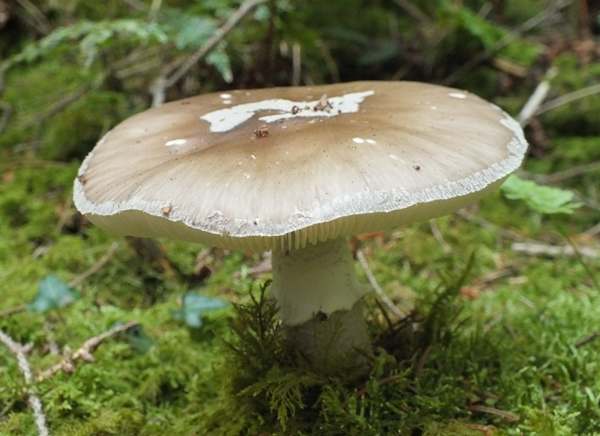
Commonly referred to as the Grey Veiled Amanita, Amanita porphyria is rather variable in colouring and stature and might easily be mistaken for either a Panthercap, Amanita pantherina or, rather more likely, the Grey Spotted Amanita, Amanita excelsa.
Amanita porphyria has a purplish-brown cap that blends in well with conifer needle and leaf litter on forest floors, making it one of the most easily overlooked of the Amanita species.
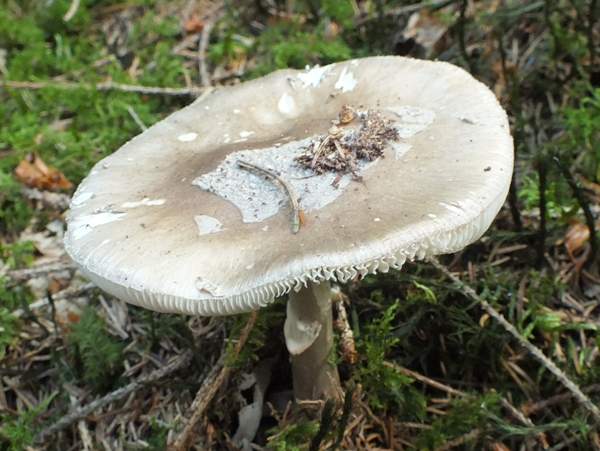
For a detailed description of the Amanita genus and identification of common species see our Simple Amanita Key...
Distribution
An uncommon find in Britain and Ireland, Amanita porphyria occurs also in many parts of mainland Europe and is reported from North America, although there is some doubt as to whether the Grey Veiled Amanitas that occur on either side of the Atlantic Ocean are indeed one and the same species.
Taxonomic history
Described in 1805 by German mycologist Johannes Baptista von Albertini (1769 - 1831) and America mycologist Lewis David von Schweinitz (1780 - 1834), who gave it the binomial name Amanita porphyria, the Grey Veiled Amanita is still generally referred to by that scientific name.
Synonyms of Amanita porphyria include Agaricus recutitus Fr., Agaricus porphyrius (Alb. & Schwein.) Fr., and Amanita recutita (Fr.) Gillet.
Etymology
The specific epithet porphyria comes from the Greek adjective porphyrius, which translates to 'clad in purple'.
Identification guide
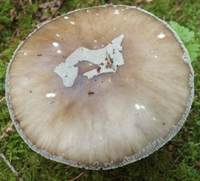 |
CapHemispherical then convex and finally flattening, 5 - 10cm diameter; various shades of purplish brown, darker in the centre and often appearing to be radially lined with purplish-brown fibres; shiny; usually retaining irregular purplish-grey veil fragments of the universal veil; margin not striate. The flesh of the cap is white or pale cream. |
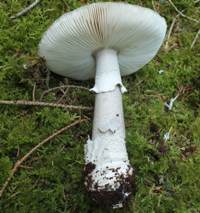 |
StemThe stem of Amanita porphyria is 6 - 11cm long and 0.6 - 1.4cm in diameter, tapering towards the apex; whitish, with fine striations above the ring, and (increasingly evident as the fruitbody matures) with violaceous grey-brown longitudinal fibres below the ring; a superior persistent white ring soon collapses against the surface of the stem. The volva comprises short irregular whitish plaques on the bulbous stem base. |
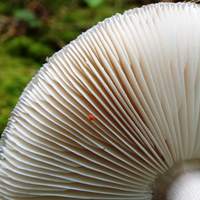 |
GillsLike most Amanita species, Amanita porphyria has free gills, which are white and fairly crowded (but much less so than in the case of Amanita spissa). |
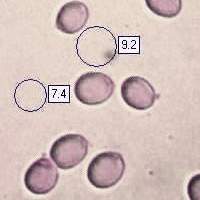 |
SporesGlobose or sub-globose; less commonly broadly ellipsoidal, 7.2-9 x 7.8-11µm; amyloid. Spore printWhite. |
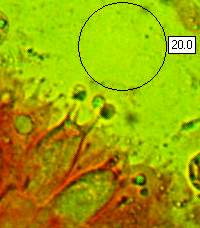 |
Basidia4-spored. Clamps are not present at the bases of basidia. |
Odour/taste |
Odour unpleasant, earthy; taste, mild but not distinctive. |
Habitat & Ecological role |
Mycorhizal softwood trees and less often with hardwoods on acidic soil; also reported to occur on heathland, where it may be mucorrhizal with heather.. |
Season |
July to November in Britain and Ireland. |
Similar species |
Amanita pantherina has white (not purplish-grey) velar remains on the cap. Amanita rubesens has flesh that turns pink when it is cut or torn. Amanita excelsa has much larger spores; its gills are more densely crowded and it has a more robust stem ring. |
Culinary Notes
The Grey Veiled Amanita Amanita porphyria is called as inedible and might possibly contain dangerous toxins, as several other species from this genus do. This species should not be gathered for eating.
Reference Sources
Fascinated by Fungi, 2nd Edition, Pat O'Reilly 2016, reprinted by Coch-y-bonddu Books in 2022.
Funga Nordica: 2nd edition 2012. Edited by Knudsen, H. & Vesterholt, J. ISBN 9788798396130
BMS List of English Names for Fungi
Geoffrey Kibby, (2012) Genus Amanita in Great Britain, self-published monograph.
Paul M. Kirk, Paul F. Cannon, David W. Minter and J. A. Stalpers (2008). Dictionary of the Fungi; CABI
Taxonomic history and synonym information on these pages is drawn from many sources but in particular from the British Mycological Society's GB Checklist of Fungi.
Fascinated by Fungi. Back by popular demand, Pat O'Reilly's best-selling 450-page hardback book is available now. The latest second edition was republished with a sparkling new cover design in September 2022 by Coch-y-Bonddu Books. Full details and copies are available from the publisher's online bookshop...
